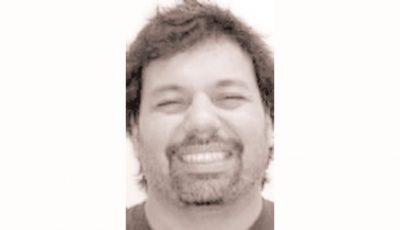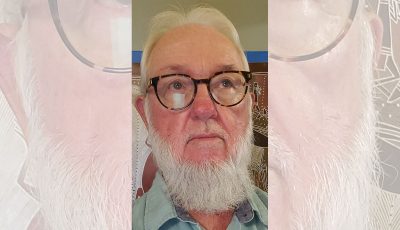By the River Jordan
I hung out with adults in church gatherings. My father, a Methodist pastor, had a co-Ilocano gentleman bishop who was “family.” His wife gathered the women while the men (women ordination came later) went about their business. I tagged along with mother.
I remember the bishop’s wife with a luggage full of vials she sold to her audience at one peso (50 U.S. cents at the time) per bottle. It was free to the borderline-poor ministers’ wives! The water content was scooped from the River Jordan on her last pilgrimage. The one peso contributed to the cost of transport.
I was not much of a Sunday Bible school devotee, but I knew enough of the role the River Jordan played in the life of our childhood hero, Jesus of Nazareth. From the Sea of Galilee flowed the river’s life into the Dead Sea, not unlike the story of barefoot Nazarene getting crucified in Jerusalem.
I never made it to Israel. I missed it by a couple of weeks when Israel went into its Six-Day War in 1967. The Star of David decided to fly over Syria’s Golan Heights, the Jordan’s West Bank, and Egypt’s Sinai Peninsula. I was interested in the Paris of the Middle East at the time, Beirut in Lebanon, as a summer break destination when I was studying in the United States.
Reared with the story of the Philippines casting the vote that got Israel into the United Nations, in a household dominated by stories of Moses, Joshua and Iesu of the Judeo-Christian tradition, I did not mind retaking Jericho in the West Bank, and mounting guns on the Golan Heights, sights set on the Damascus road of Paul. David of less than 3 million people stared the belligerent glare of 120 million Goliaths from Syria, Jordan, Egypt, and Palestine; it was not hard to be politically aligned with Israel. Supportive of the underdog, I was also swayed by Hollywood’s versions of the Holocaust used to justify Israel’s existence at the expense of Palestinian infidels.
It is Holy Week in Christendom, the annual rehearsal of a familiar story of a triumphal march to Jerusalem from the Bethany of Mary, Martha, and Lazarus through the table upsetting of money changers at the temple, to his calling the powers-that-be “hypocrites and snakes,” and on to the shedding of a tear for Jerusalem at the Mount of Olives, a night vigil in the garden of Gethsemane, a sound of silence at Caiaphas’ Sanhedrin and Pilate’s Praetorium, to the ignominious three-hour hanging on the cross in Golgotha, and the eventual burial into Joseph of Arimathea’s tomb, found empty on the third day. The story told more than 19 centuries ago has since been embellished many times over so much so that its scriptural metaphors have become the object of debate in Western literalists’ accounts of history.
But history does not a drop of water make; story does with tears. The human story relies on metaphors for the infinite mystery, the immeasurable depth, the endless vastness even of existence’s finitude, which lead artists to know in their bones, like HH’s heroic Journey to the East where the main character concludes that creation is more engaging that the creator, that art is more interesting than the artist.
How many tears have come out of a simple issue like water in the River Jordan in recent years? Eretz Yisrael names the story of Abraham and his progeny known as the area “between Dan and Beersheba”; there was no quarrel with boundaries of the real estate as remembered accounts addressed the culture (souls) rather than precision in geography. The told memory survived the Babylonians and Assyrians, Persians and Macedonians, Greeks and Romans, Meccans and Ottomans, Semites and Brits.
The warrior Ben-Gurion declared the new state of Eretz Israel in 1948. The Jewish State had not rested ever since. They mauled the opposition into camps; diverted fresh water from the Sea of Galilee to the Negev, and when Syria and Jordan did the same on the headwaters feeding into the sea of Tiberius, little David unleashed air power and Eretz Israel kept adding more miles to its real estate. It is evidently going after old Solomon’s geographic boundaries!
The water of life, meanwhile, is drying up. There is no shortage of water in the planet with the melting polar caps; it’s the potable water that is at issue. The U.S. Midwest is a disastrous silent spring as fertilizers and pesticide in the farms headed to freshwater aquifers. The drying River Jordan waters regional conflicts.
Benzene and p-xylene recently come to the fore in China. They are byproducts in petrochemical plants. Benzene is carcinogenic and p-xylene causes complex neural disorders. They are also favored ingredients in the making of plastic bottles of beverages we drink and wrap food we microwave. Both are highly flammable; a Guangdong plant exploded not too long ago, eliciting local protests. The city of Lanzhou, Ganzu, has benzene in its drinking water at 20 times acceptable limit, compliments of a nearby petrochemical plant.
The sad side of Holy Week has become contemporaneous as the water of life riles the economic, political, and cultural shades of our lives. “This is my blood, poured out for you…”



























